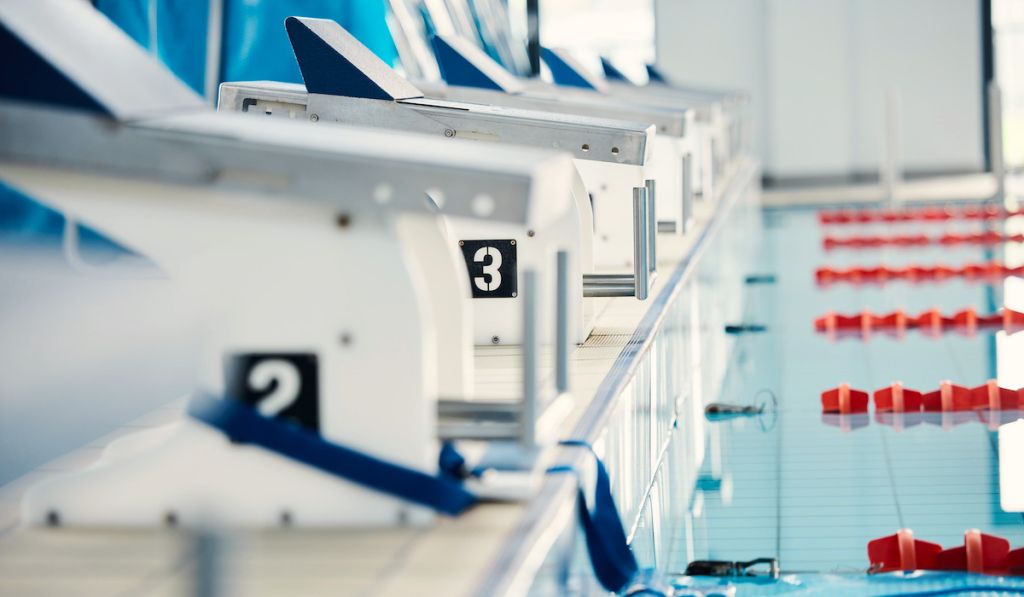Invest in Your Time, Staff and Peace-of-Mind With Sanitation that Lowers Pool Maintenance Costs
As an aquatic facility manager, ensuring the safety and well-being of your guests is paramount to the success of your business. Pool sanitation plays a pivotal role in safeguarding their health and satisfaction. Inadequate sanitation can turn poorly maintained pools into breeding grounds for harmful bacteria, viruses and parasitic infections, posing serious risks to swimmers.
Beyond the safety aspect, upgrading your pool sanitation method can also lead to significant cost savings over time. By adopting the right approach, you not only save money in the long run, but you’ll also minimize day-to-day maintenance efforts.
By investing in a proper pool sanitation strategy, your aquatic facilities can enjoy a more healthy, easy-to-maintain and cost-effective environment that’s free of unwanted contaminants.
The Benefits of Profitable Pool Sanitation
Proper pool sanitation is vital for maintaining a safe and healthy swimming environment. By employing effective techniques and systems, the risk of illnesses and pool downtime due to bacteria and other contaminants is significantly reduced. Clearing the pool water of contaminants also prevents the buildup of harmful bacteria and algae. In addition to saving time and energy, this approach leads to reduced chemical usage.
An improved swimming experience can be achieved by reducing chlorine and chemical treatments. When too many chemicals are used for sanitation, a pool’s pH levels may become imbalanced, leading to potential issues. To address these concerns, many aquatic facilities are adopting alternative pool sanitation systems, such as Hydroxyl-Based AOP (advanced oxidation process). Utilizing fewer chemicals creates a more pleasant swimming environment, reducing irritations and health-related problems. Moreover, it prevents the corrosiveness of water, which can damage the pool’s structures when pH levels are too high. By implementing a system that consistently sanitizes the appropriate amounts, aquatic facilities can save time and money while enhancing the customer experience.
Keeping the pool sparkling clear, clean, and inviting is pivotal in ensuring customer satisfaction and retention. Regular testing and maintenance are essential to prevent swimmers from being exposed to harmful bacteria, viruses and other contaminants that can cause illnesses. By establishing a consistent process and reliable system, aquatic facilities can offer a more pleasant, healthy and refreshing swimming experience. Investing in a proper pool sanitation system ensures customers enjoy a safe and enjoyable swimming environment, encouraging their desire to return for future visits. Without this crucial aspect in place, aquatic facilities not only risk failure but also face greater challenges and expenses associated with poor sanitation practices.
The Costly Consequences of Poor Pool Sanitation
When an aquatic facility neglects proper pool sanitation, a myriad of problems arise, and the repercussions can be disastrous. Insufficient sanitation allows harmful bacteria, viruses, and pathogens to proliferate, leading to respiratory illnesses, skin infections, and irritations for swimmers. In a misguided attempt to compensate, aquatic facilities often resort to excessive chemical and chlorine usage, inadvertently fostering the growth of algae and other microorganisms, further exacerbating chemical-based skin issues. Ultimately, when swimmers suffer from these problems, the aquatic facility becomes liable for negligence in maintenance.
Holding aquatic facilities accountable for their poor sanitation practices carries severe financial and legal consequences. These aquatic facilities are legally obligated to adhere to health codes and regulations, and any violation of these standards can result in hefty fines, legal actions, and even the risk of closure. In extreme cases, aquatic facilities may be held personally liable for any harm caused due to their failure to maintain proper pool sanitation. The costs of subpar pool sanitation extend beyond health risks, leading to increased operating expenses.
As inflation continues to surge, aquatic facilities find it increasingly challenging to bear the burden of additional operating pool maintenance costs caused by inadequate sanitation. The damage incurred to the facility, pool liners, equipment, and exorbitant maintenance expenses force these facilities to raise their prices, ultimately leading to a decline in patronage. The perception of an unhealthy and unsanitary facility further contributes to decreased footfall. Moreover, the facility not only risks facing substantial fines from health authorities but also faces potential legal actions from dissatisfied patrons, driving up insurance costs for the facility. These financial impacts are significant and avoidable through the implementation of proper procedures and robust sanitation systems.
By prioritizing effective pool sanitation measures and investing in reliable systems, aquatic facilities can safeguard their reputation, mitigate financial risks, and ensure a safe and inviting environment for their valued patrons. The proactive adoption of proper sanitation practices is the key to eliminating unnecessary expenses and sustaining a thriving aquatic facility.
Money-Saving Made Easy: Effective Pool Sanitation Strategies
Prioritizing gold standard safety and health is paramount when it comes to proper sanitation in aquatic facilities. Employing the best practices that anticipate and address potfential issues beforehand is crucial. This includes implementing a consistent schedule for water testing at least once a week, ensuring precise chlorine and pH levels and preventing any contaminants in the water. By maintaining a consistent regime for chemical balancing, the risk of bacteria, contaminants, and eye and skin irritation that swimmers may experience is significantly reduced. While chemical balancing is a vital aspect of keeping the aquatic pool clean and healthy, it does require more time and energy and may necessitate the use of special gloves to handle the chemicals.
Efficiently managing time, costs and energy is essential for the future success of aquatic facilities. Investing in advanced pool sanitation technologies is an excellent way to improve sanitation while simultaneously reducing the risk of recreational water illnesses and minimizing the need for various pool maintenance chemicals. Although chlorine and bromine are commonly used pool sanitation chemicals and effectively control bacteria, microorganisms, and algae, they can be challenging to manage and maintain. Embracing innovative, low-chlorine and energy-efficient supplemental pool sanitation technologies such as AOP pool systems presents a viable solution.
AOP is a powerful and effective pool sanitation technology that is gaining popularity in aquatic facilities. By utilizing of a potent oxidant called hydroxyl radicals, AOP serves as a secondary sanitation method, destroying pathogens, organic compounds and chloramines from swimming pool water. Implementing AOP technology creates a healthier swimming environment by reducing the dependence on chlorine and other chemicals, leading to a safer pool while eliminating chloramines. This transformation results in a more enjoyable swimming experience for patrons.
The advantages of investing in AOP are numerous. AOP effectively maintains water quality in swimming pools, reducing the need for excessive chlorine usage and thereby making it a cost-effective choice for aquatic facilities. Moreover, AOP technology necessitates a reduction in the overall chemicals used in the swimming pool, minimizing their impact on the environment. By embracing advanced pool sanitation technologies like AOP, aquatic facilities can benefit from improved water quality, significant cost savings, and a healthier swimming environment. This efficient and effective process ensures the safety and enjoyment of swimmers at any aquatic facility.
Upgrade Your Peace-of-Mind & Pool Sanitation
Upgrading your aquatic facility’s pool sanitation is not just about health and safety but also about smart financial planning. By investing in low-chlorine and low-energy pool sanitation systems like Hydroxyl-Based AOP, you can create a cleaner, more enjoyable swimming experience for your guests while achieving significant cost savings in the long run. Being proactive and strategic in implementing proper sanitation practices will ultimately protect your business and ensure your aquatic facility remains in good condition.





